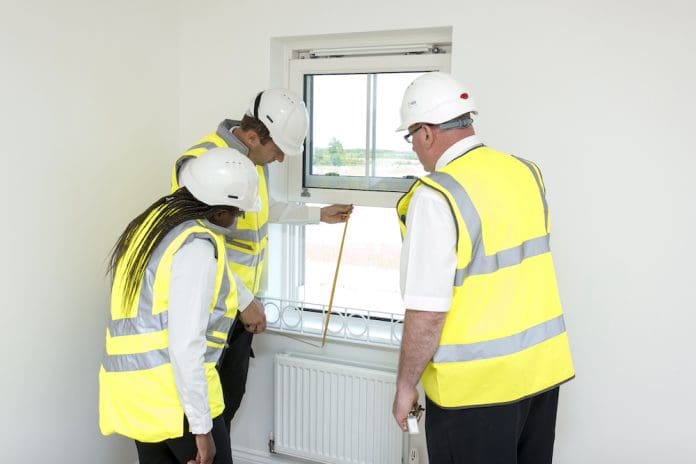The Consumer Code for Home Builders has launched a revised and updated Code which many builders must comply with from January 2024. Code chair, Noel Hunter OBE, explains what’s changed, why, and what this means in practice for builders
The Consumer Code for Home Builders has been revised following an independent review and widespread consultation with the industry and other stakeholders.
The updated Consumer Code Scheme (fifth edition) strengthens existing protection for consumers by addressing gaps and clarifying guidance.
It also aligns the Consumer Code for Home Builders (the Code) more closely with other codes in the marketplace.
The revised Code, which has been approved by the Chartered Trading Standards Institute, applies to all home builders registered with the Code’s supporting warranty bodies, NHBC, LABC Warranty, Premier Guarantee and Checkmate unless they have activated with a different code scheme.
This is not about wholesale change. In many cases, builders are already doing much of what is covered in the new requirements, and this gives us an opportunity to formalise that good practice.
However, home builders will need to make changes to some existing practices and documentation to comply with the Code ahead of implementation on 1 January 2024, so it’s important to start preparing now.
Principal changes in the updated Consumer Code
All those affected by the Consumer Code for Home Builders should read the updated requirements and guidance in full.
The key changes include:
- A new 14 day cooling-off period from date of reservation.
- A new pre-inspection requirement to enable home buyers to seek professional help to identify snags and get them resolved before completion.
- More detailed requirements and guidance for managing customer complaints.
- An increase in the amount home buyers can claim through our IDRS to £50,000.
The updated Code also includes a renewed focus on supporting customers who may be vulnerable, with guidance and links to further information to help sales teams understand best practices in this area.
Complying with the revised Code
Code compliance is mandatory for all home builders operating under the Code’s supporting warranty bodies unless they have activated with another code approved by the home warranty body.
To help builders comply with the revised Consumer Code for Home Builders, we have launched a Transition Pack, which includes a more detailed summary of the main changes, as well as guidance on how to manage complaints.
The pack provides links to a suite of updated documents, including the new Consumer Code Scheme and Builder Guidance, as well as an updated reservation agreement, compliance checklist and training information.
One of the strengths of the Code is the compliance regime which is designed to help builders identify what they are doing well and what they need to improve.
This includes self-assessment as well as site visits carried out by independent auditors. As the revised Code is implemented, we will be looking to work collaboratively to help builders get up to speed with the updated requirements as quickly as possible and address any gaps so that home buyers feel the benefits of this enhanced protection.
It is important to remember that our IDRS is fully independent, handled by the Centre for Effective Dispute Resolution (CEDR), which is a government-accredited body. Adjudicators will judge any disputes relating to homes reserved after 1 January 2024 against the revised Code.
Understanding changes in the new homes codes of practice marketplace
One of the principal drivers for doing such a comprehensive, independent review of our Code was changes in the marketplace we operate in, which has increased the number of codes of practice now in operation.
The Building Safety Act 2022 includes provision for a statutory New Homes Ombudsman and states that it may approve or issue a statutory code, but both will require secondary legislation, and there does not appear to be an appetite – or legislative time – to progress this currently, and there are no plans in place to replace existing codes.
With the introduction of a new voluntary code of practice and a voluntary New Homes Ombudsman, the landscape has become more complex for builders and consumers alike.
With that in mind, our independent review looked specifically at where the Consumer Code for Home Builders could be developed to align more closely with other codes where it was in the interest of consumers to do so. Some of the new requirements introduced mean consumers will have more consistent levels of support irrespective of the code their builder complies with.
As things currently stand, all existing codes, and their chosen alternative dispute resolution schemes, remain voluntary. Developers are free to choose which Code they comply with, subject to any restrictions imposed by their warranty provider.
Top tips to become Code 2024 ready
- Download the Transition Pack and share with all customer-facing staff
- Complete the free online training which covers the revised Code Scheme in full, including updates
- Prepare to update your documentation for reservations from 1 January 2024 – use the resources on our website to help you
- Update downloads or links on your website to the Consumer Code Scheme – but don’t forget the existing Code (Fourth Edition) will continue to apply to homes reserved up to 31 December for two years after completion, so both versions should be made available.
- Download our compliance checklist to help ensure you have everything in place to support home buyers
- Read our ‘Right First Time’ fact sheet on supporting vulnerable customers
- Promote your readiness for complying with the new Code to demonstrate your commitment to customer service.
Noel Hunter OBE

Code chair
Consumer Code for Home Builders

















